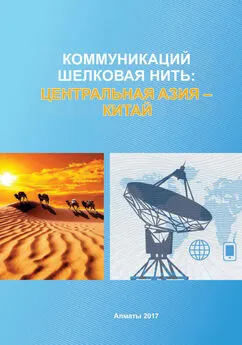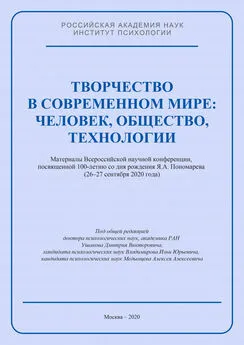Коллектив авторов - Регионы в современном мире: глобализация и Азия. Зарубежное регионоведение
- Название:Регионы в современном мире: глобализация и Азия. Зарубежное регионоведение
- Автор:
- Жанр:
- Издательство:неизвестно
- Год:неизвестен
- ISBN:978-5-00165-178-9
- Рейтинг:
- Избранное:Добавить в избранное
-
Отзывы:
-
Ваша оценка:
Коллектив авторов - Регионы в современном мире: глобализация и Азия. Зарубежное регионоведение краткое содержание
Регионы в современном мире: глобализация и Азия. Зарубежное регионоведение - читать онлайн бесплатно ознакомительный отрывок
Интервал:
Закладка:
Conclusion
The digital stage of globalization with its political, economic and informational aftereffects is the “new normal” of international affairs while digital infrastructure and competences are the “new must-have” for international actors. For ASEAN striving to increase its global influence, this is especially relevant as it will specify on what terms the association will integrate in the global economy, politics and security.
ASEAN’s response is complicated by numerous factors, as the association has only partially succeeded in making Southeast Asia an investor-attractive economic area. As the international milieu in which the association has to implement its policy becomes increasingly competitive, ASEAN has to act without the previously prepared assets. Actually, the ASEAN-led multilateral formats and initiatives, unable to digitally support ASEAN’s prospective plans, as well as to ensure ASEAN’s extra-regional partners in ASEAN’s indispensability, are likely to present the association with new challenges.
To effectively cope with them, the association will have to revise its present mode of relations with dialogue partners. Among them, the Russian Federation, an established global power with unique digital competences and a long-standing trusted friend of the association, has ample changes to loom all the larger in ASEAN’s present and future order of international priority.
Асеан в политике Вьетнама: между двумя председательствами
В главе рассматривается АСЕАН как направление внешней политики Вьетнама в период между председательствами Ханоя в этой организации в 2010 и 2020 годах. Выявлены произошедшие за этот период во внешней среде изменения, повлиявшие на политику Ассоциации (рост соперничества между великими державами, обострение споров в Южно-Китайском море, рост протекционизма, рестрикционизма и национализма, нетрадиционных вызовов безопасности, включая изменения климата и т. д.), а также вклад Вьетнама в формирование ответа АСЕАН на них. Подробно изучены приоритеты Ханоя в период председательства в 2020 году – как декларируемые, так и практические.
На взгляд авторов, из-за обострения конкуренции между великими державами, которое может иметь серьезные последствия для Юго-Восточной Азии, нынешнее председательство Вьетнама становится поворотным моментом в истории АСЕАН. Осознавая существо проблем, с которыми сталкивается Ассоциация, вьетнамское председательство предлагает партнерам СРВ по АСЕАН и внешним игрокам повестку сотрудничества с отчетливой консолидирующей составляющей.
Новизна исследования проистекает из актуальности рассмотрения вероятных действий Вьетнама в качестве нынешнего председателя АСЕАН, в основе анализ связей между изменениями международной обстановки в Юго-Восточной Азии в период между 2010 и 2020 годами, ответными мерами АСЕАН их вьетнамской составляющей. В соответствии с такой аналитической парадигмой проводится детальная оценка приоритетов и направлений политики СРВ в период председательства в АСЕАН в 2020 году. Выводы по этим вопросам определяют практическую значимость и научную актуальность исследования.
Ключевые слова: Вьетнам, АСЕАН, Юго-Восточная Азия, АТР, ИТР, Южно-Китайское море, безопасность, сотрудничество.
The chapter examines the ASEAN direction in Vietnam’s foreign policy between its chairmanships in 2010 and 2020 respectively. The international changes that occurred during this period and influenced on ASEAN’s policy (the intensification of rivalry between the great powers, escalation of the South China Sea dispute, the growth of protectionism, restrictionism and nationalism, non-traditional security challenges including climate change, etc.), as well as its Vietnam’s dimension in forming ASEAN’s response, are thoroughly scrutinized. The SRV’s priorities during its 2020 chairmanship – both declared and practical – are studied in detail.
The authors argue that owing to increased competition between the great powers with potentially disturbing implications for Southeast Asia, the on-going Vietnam’s chairmanship becomes a crucial point in ASEAN’s history. Grasping the challenges, the association has to deal with, as the present ASEAN chairman Vietnam offers its ASEAN partners, as well the external powers, an agenda of cooperation with a clear consolidating component.
The novelty of the study stems from a cutting-edge research of Vietnam’s likely policy directions as the present ASEAN chairman, which is based on an analytical interlink between the changes of the international milieu in Southeast Asia between 2010 and 2020, ASEAN’s remedial measures and their Vietnam perspective. In line with this analytical focus, a deep and nuanced assessment of the SRV’s priorities and policy directions as the ASEAN’s 2020 chairmanship is made. Findings on this set of issues add the practical relevance of the study and make it academically unique.
Keywords: Vietnam, ASEAN, South East Asia, Asia Pacific, Indo-Pacific, South China Sea, security, cooperation.
Introduction
The effective chairmanship in the Association of Southeast Asian Nations (ASEAN) is considered by the leadership of the Socialist Republic of Vietnam (SRV) as one of the main foreign policy tasks for 2020. The midterm review of the ASEAN Community Vision 2025 and the 25th anniversary of Vietnam’s accession to the Association add urgency to this priority. The reputation aspect also matters – the election of Hanoi to the post of the nonpermanent member of the UN Security Council for 2020-2021 and the SRV’s chairmanship in ASEAN are convincing indicators of an increased role of the state on the regional and the global arena. To examine the ASEAN direction of Vietnam’s policy between the previous (in 2010) and the on-going SRV’s chairmanship in ASEAN becomes a timely and relevant exercise.
The chapter starts from a review of international context in Southeast Asia between 2010 and 2020. Then it turns to examining Vietnam’s contribution to ASEAN’s policy to cope with the emerging challenges. The priorities of Vietnam’s on-going ASEAN chairmanship are considered through the prism of these developments. The conclusion summarizes the main findings of the study.
A Decade of Changes
Between two Vietnam’s chairmanships, Southeast Asia has seen profound international changes. In 2010, the region and the world had barely recovered from the global financial crisis. ASEAN’s policy demonstrated that in a critical situation, the ten states prefer to act separately rather than collectively 47 47 Kanaev E. A., Kurilko A. E. Yugo-Vostochnaya Aziya v usloviyah mirovogo finansovo-ekonomicheskogo krizisa (South East Asia in the context of the global financial and economic crisis – in Russ.) // Mirovaya ekonomika i mezhdunarodnye otnosheniya, 2010, No 2. Р. 38–46.
. This, in turn, decreased ASEAN’s ambitions to solidify its status of the driving force of the Asia-Pacific. From the Vietnam perspective, a task to confirm the validity of the Association’s ambitions, as well as to provide ASEAN with a new reputational value, was pressing. On the whole, that task was fulfilled. The main results of Vietnam’s chairmanship included the expansion of the East Asia Summit through the accession of Russia and the United States and the launch of the ADMM Plus format.
Vietnam’s 2010 chairmanship saw Washington’s involvement in the South China Sea issue, including the Sino-American polemics at the ASEAN Regional Forum 48 48 Hillary Clinton Changes America’s China Policy // Forbes, July 28, 2010. URL: https://www.forbes.com/2010/07/28/china-beijing-asia-hillary-clinton-opinions-columnists-gordon-g-chang.html#16e70ceb50c7 (date of access: 24.03.2020).
. These moves were welcomed by Vietnam and a number of ASEAN states seeking the US’ support in opposing the PRC 49 49 Vietnam, the US, and Japan in the South China Sea // The Diplomat, November 26, 2014. URL: https://thediplomat.com/2014/11/vietnam-the-us-and-japan-in-the-south-china-sea/ (date of access: 24.03.2020).
.
Significant progress has been achieved in relations between ASEAN and its extra-regional partners. Specifically, the involvement of non-ASEAN countries in the regional affairs has radically changed – some of them actually started to set the tone for the evolution in Southeast Asia. China launched the Belt and Road Initiative, which aims to provide large-scale financial injections into ASEAN countries focusing on, but not limited to, the development of their infrastructure. Japan responded by the “Partnership for Quality Infrastructure” (hinting at the “poor-quality” Chinese), further politicizing economic cooperation. The US Republican Administration brought a second wind to the Quadrilateral Defense Cooperation (Quad) (USA, Japan, India, Australia) and introduced the “Indo-Pacific” narrative. Simultaneously, Washington created the “Blue Dot Network”, with the focus upon the infrastructure development. Lastly but importantly, extra-regional actors intensified their polities, from both substantial and institutional perspective, in the Mekong River basin.
Читать дальшеИнтервал:
Закладка:










